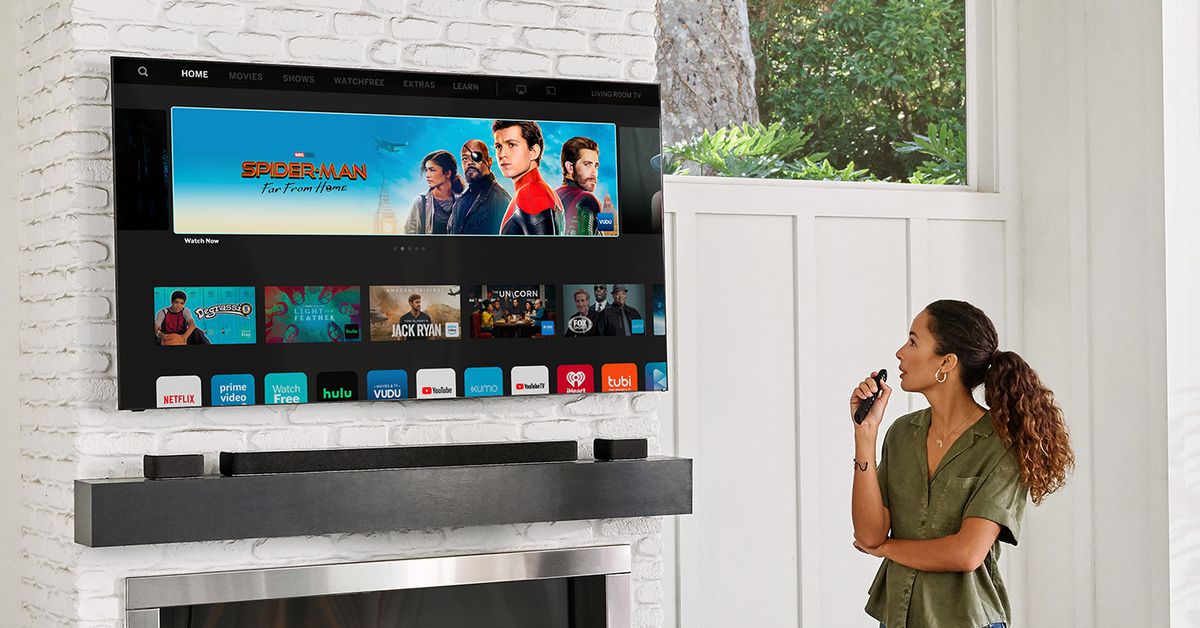Vizio files to go public, has sold over 80 million TVs
Source: The Verge added 02nd Mar 2021Vizio today filed its S-1 with the US Securities and Exchange Commission as the TV and soundbar maker heads toward an initial public offering. “We envision the Vizio smart TV as the center of the connected home — where families play games together, where friends watch movies together, where work and learning happen, and where all things in between take place,” Vizio founder, chairman, and CEO William Wang wrote in a letter that opens the S-1. “Going public is an important milestone for us as we continue to grow and execute our goals.”
The filing reveals that Vizio has sold over 80 million TVs and 11 million soundbars since the company’s founding. It sold 7.1 million TVs in 2020. Vizio’s TVs have long delivered performance and picture quality far above their price, though in recent years competitors like TCL have tried to outdo the company in this regard. “We will continue our successful hardware business, iterating on models as we’ve done before, and at the same time build our name in smart TV software,” Wang said.
The S-1 begins with Wang recounting his surviving a plane crash. “I ran to the front of the plane, forced open the emergency door and jumped out,” he said. “I’ll save you the messy details, but let’s just say that I am beyond thankful to be here today, writing you this letter.” According to Wang, his renewed appreciation of being home — and a desire to make it “everyone’s favorite place” — led to Vizio’s creation.
But the future is more so about software and platforms than it is about selling TVs, where the profit margins are often scant. Later in the filing, Vizio says:
While we generate the significant majority of our total net revenue from sales of our Smart TVs and sound bars, our Platform+ net revenue has grown 304.4 percent from $36.4 million in 2018 to $147.2 million in 2020. We believe that Platform+ will be the key driver of our future margin growth and financial performance.
“Platform+” refers to a combination of SmartCast (the software that runs on Vizio’s TVs) and Inscape, which is Vizio’s data, analytics, and content recognition subsidiary. The S-1 points out that the company continues to see huge advertising potential from its ad-supported video on demand (AVOD) services like WatchFree and Vizio Free Channel. It also sells ad space on the SmartCast home screen and gets a percentage of subscriptions and purchases made in third-party apps on its platform. Plus, Vizio charges streaming partners to put their logo on TV boxes or branded remote buttons. The company says there are currently over 12 million active SmartCast accounts. (Interestingly, Vizio also reveals there are 5.3 million internet-connected TVs still running its legacy software.
(Important background on Vizio’s data practices: the company agreed in 2017 to pay the FTC $2.2 million over charges that the company was tracking customer viewing habits without obtaining sufficient consent. Those same concerns also led to a $17 million class action settlement.)
Vizio tried to completely reinvent the TV experience in 2016 by removing all built-in apps from its first SmartCast TVs. Instead, the TVs relied on “casting” content from entertainment apps on mobile devices. The company also briefly ditched the traditional TV remote control and packaged an Android tablet with those TVs. Both of these grand experiments were reined in a few years later, with Vizio again bundling popular apps on its TV platform (while retaining the same casting features as before) and switching back to a normal remote.
Risk factors in the S-1 are all pretty standard, though Vizio does acknowledge the sometimes fractious relationship between streaming app companies and platforms. “If we are unable to provide a competitive entertainment offering through SmartCast, our ability to attract and retain consumers would be harmed,” the document says.
Vizio says it envisions the future of SmartCast expanding beyond pure entertainment to include the following:
Communication: Engaging with social networks, using messaging services and accessing telecommuting features such as video conferencing.
Fitness and wellness: Connecting to interactive fitness and wellness services, such as personal training sessions and exercise tracking, from the comfort of their own living room.
Commerce: Browsing online shopping services, purchasing products featured on TV as part of dynamic ads and placing food orders on delivery services through voice control.
Community: Hosting virtual, integrated watch parties for the latest movie or the big game; watching live sports on TV will become an interactive experience through play-along gaming.
Dynamic entertainment experiences: Attending virtual concerts or sporting events offering viewer-controlled, multi-cam experiences.
Vizio has applied to list its stock on the New York Stock Exchange under the symbol “VZIO.”
brands: 11 ACTION AM Built Experience First It Key Majority MILESTONE Million Mobile New party Pure Recent Smart Space Symbol Tablet TCL VIZIO WAS Writing media: 'The Verge' keywords: Android App Fitness Games Gaming Internet Mobile Smart TV Software Sound TV
Related posts
Notice: Undefined variable: all_related in /var/www/vhosts/rondea.com/httpdocs/wp-content/themes/rondea-2-0/single-article.php on line 88
Notice: Undefined variable: all_related in /var/www/vhosts/rondea.com/httpdocs/wp-content/themes/rondea-2-0/single-article.php on line 88
Related Products
Notice: Undefined variable: all_related in /var/www/vhosts/rondea.com/httpdocs/wp-content/themes/rondea-2-0/single-article.php on line 91
Warning: Invalid argument supplied for foreach() in /var/www/vhosts/rondea.com/httpdocs/wp-content/themes/rondea-2-0/single-article.php on line 91
